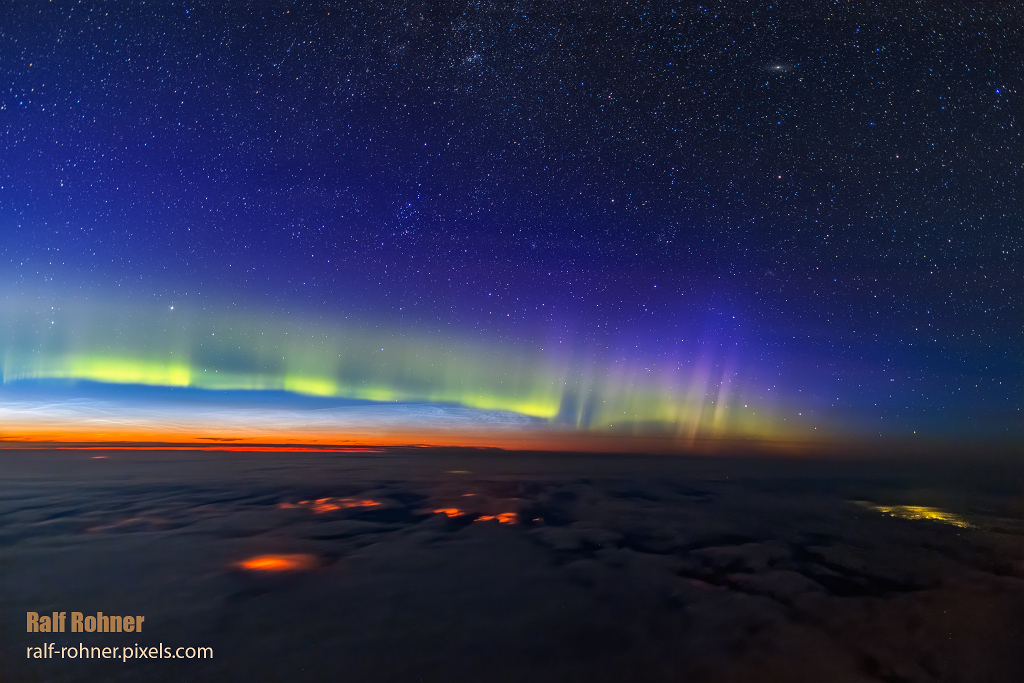太空的边缘
(原标题: The Edge of Space)
2021-07-24
浏览次数: 160
太空从哪里开始?出于太空飞行的目的,有人会说在卡门线,目前定义为100公里(60英里)的高度。其他人可能会在地球平均海平面以上80公里(50英里)处放置一条线。但是并没有明确的物理界限来标记大气层的终结和空间的开始。事实上,卡门线本身就在上层中间层和下层热层之间的过渡附近。夜光云或夜光云是高纬度夏季的幻影,形成于接近中间层顶部的高度,高达80公里左右,也被称为极地中间层云。由高能粒子激发热层中的原子引起的北极光(和南极光)的极光带可以从80公里以上延伸到600公里以上的高度。这张照片拍摄于驾驶舱,飞行高度为10公里(33,000英尺),属于平流层航空领域。这张照片捕捉到了星空下的夜光云和北极光,俯瞰着地球的地平线和太空的边缘。
查看原文解释
Where does space begin? For purposes of spaceflight some would say at the Karman line, currently defined as an altitude of 100 kilometers (60 miles). Others might place a line 80 kilometers (50 miles) above Earth's mean sea level. But there is no sharp physical boundary that marks the end of atmosphere and the beginning of space. In fact, the Karman line itself is near the transition between the upper mesosphere and lower thermosphere. Night shining or noctilucent clouds are high-latitude summer apparitions formed at altitudes near the top of the mesosphere, up to 80 kilometers or so, also known as polar mesospheric clouds. Auroral bands of the northern (and southern) lights caused by energetic particles exciting atoms in the thermosphere can extend above 80 kilometers to over 600 kilometers altitude. Taken from a cockpit while flying at an altitude of 10 kilometers (33,000 feet) in the realm of stratospheric aeronautics, this snapshot captures both noctilucent clouds and aurora borealis under a starry sky, looking toward planet Earth's horizon and the edge of space.
© Ralf Rohner
